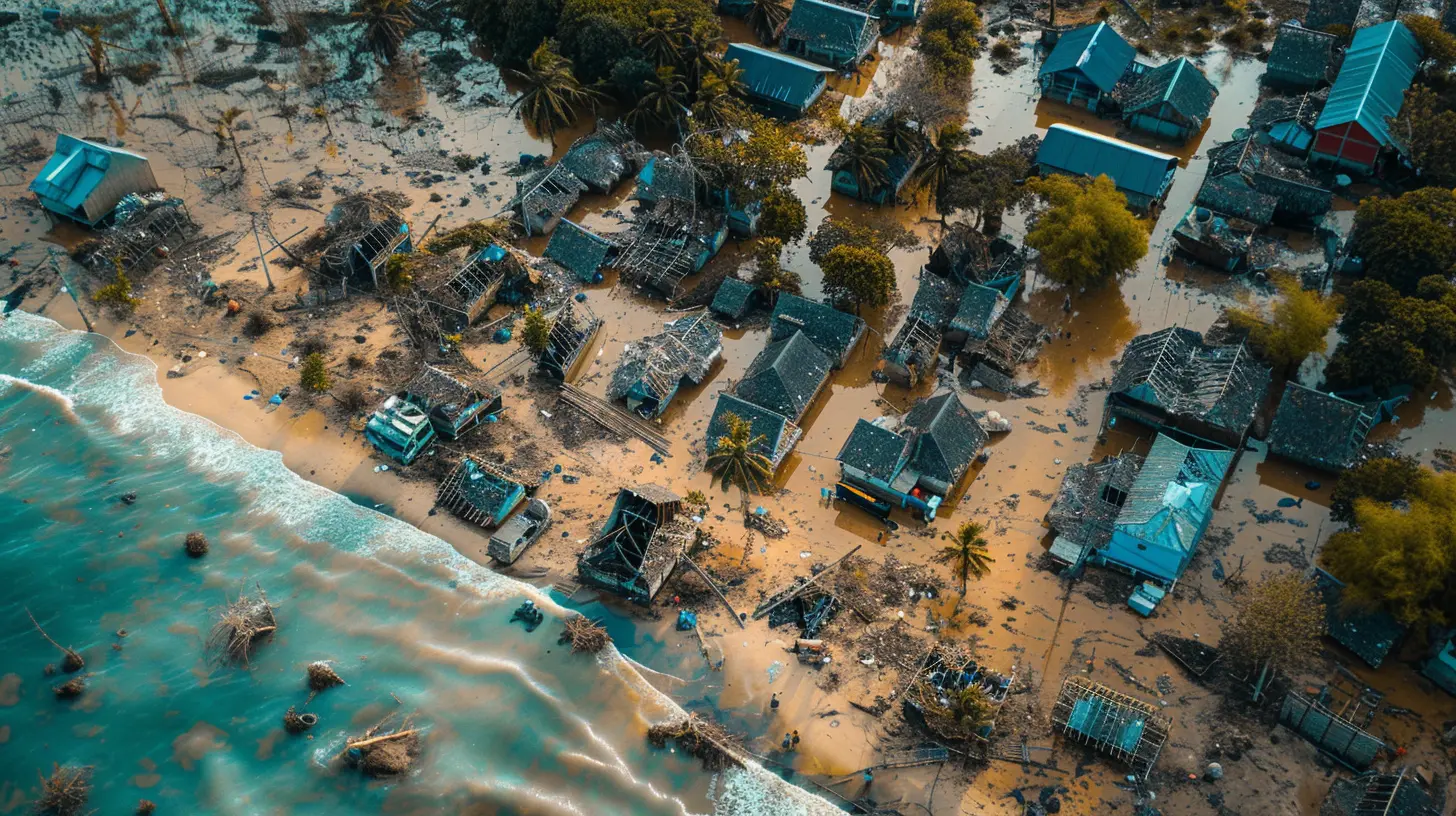Key Considerations for Donating to Disaster Relief Efforts
13 November 2025
When disaster strikes—a hurricane, earthquake, wildfire, or humanitarian crisis—most of us feel an immediate urge to help. Our hearts break as we see families lose homes, communities torn apart, and essential resources vanish overnight. Giving a donation seems like the least we can do. But in the rush to be generous, it's easy to miss some crucial details that could mean the difference between making a big impact or wasting your well-intentioned gift.
So, let’s slow it down a bit. Let's talk about what really matters when donating to disaster relief efforts. Because even though every dollar counts, how and where you give can multiply your impact—or dilute it entirely.
Think Before You Give: Why Smart Giving Matters
You wouldn’t buy a car without doing some research first, right? Same goes for donating to relief efforts. While emotions run high after a disaster, taking a few minutes to vet your options can ensure your contribution leads to real help, not red tape.It’s not just about opening your wallet—it's about opening your eyes.
1. Understand the Real Needs on the Ground
What People Actually Need vs. What We Think They Need
We've all seen the emotional images: people surrounded by debris, belongings gone, and daily life in chaos. Our instinct might be to send clothes, blankets, or canned goods. But often, these items end up unused, piled in storage, or become logistical nightmares.Relief organizations usually know what’s needed most—often it's cash. Why? Because it gives local responders the flexibility to buy what’s actually needed, right away. Plus, it boosts the local economy, which helps the recovery process.
Tip: Check with reputable organizations or news updates about what’s really needed before giving physical goods.

2. Choose Reputable Organizations
Not All Charities Are Created Equal
When tragedy hits, it also attracts scammers. Sad but true. Fraudulent websites pop up, fake GoFundMe pages circulate, and not every charity handles donations responsibly.Do a little homework. Stick with charities that have a strong track record in disaster relief, especially those already working in the area. Sites like Charity Navigator, GuideStar, or the Better Business Bureau's Wise Giving Alliance can help you find legitimate, efficient organizations.
What to Look For:
- Transparent financial reporting- High percentage of funds going directly to aid
- Fast and efficient response records
- Local partnerships or presence in affected areas

3. Timing Is Everything
Immediate Help vs. Long-Term Recovery
When the news cycle moves on, the needs don’t vanish. In fact, cleanup, rebuilding, and mental health support often take months—sometimes years.If you're donating, think about splitting your efforts: some now, and some later. Consider setting a reminder to give again in six months when others may have forgotten.
Pro Tip:
Recurring donations—even small ones—can support long-term recovery in a sustainable way, especially when media attention fades.4. Don’t Forget the Locals
Supporting Community-Based Efforts
While big international organizations often get the spotlight, local nonprofits and grassroots groups are usually the first on the ground—and the last to leave. They know the community inside out, which often means quicker and more culturally appropriate aid.Look for community-based organizations that are working hand-in-hand with the people affected. Sometimes, a $100 donation to a small local group can go further than the same donation to a massive agency.
5. Consider the Type of Disaster
Different Needs for Different Crises
Natural disasters like hurricanes or earthquakes can require totally different relief strategies than ongoing crises like war, famine, or pandemics.For example:
- After a hurricane, there's a need for food, clean water, and shelter.
- In a conflict zone, safety, medical help, and refugee support are critical.
- During a health crisis, PPE, sanitation, and medical staff are top priorities.
Giving becomes even more powerful when you match your support with the specific needs of the situation.
6. Avoid Donation Fatigue
Giving More by Giving Smart
Do you ever feel overwhelmed by the sheer number of disasters happening around the world? It’s okay to feel that way. You can’t help everyone, and spreading yourself too thin may lead to burnout.Focus your energy and donations on causes that resonate most with you or where you feel your dollars will do the most good. You don’t have to give to every disaster to make a real difference.
Giving is a marathon, not a sprint.
7. Beware of Emotional Appeals
Heartstrings vs. Head Smarts
Ever seen a heartbreaking video with sad music and dramatic imagery? It’s powerful stuff. But sometimes, marketing is stronger than the actual results a charity delivers.Before clicking “Donate Now,” take a moment to check out the organization’s impact page or reviews. How many people did they help last time? What’s their overhead? Are they transparent?
You can give with your heart and your head. It’s not one or the other.
8. Consider Donating Cryptocurrency or Stock
More Bang for Your Buck (and a Tax Perk)
Yep, donating isn’t limited to cash anymore. Many charities now accept crypto or stock donations. This can be a win-win: the organization gets the full value of your donation, and you may avoid capital gains taxes.If you have appreciated assets, donating them might allow you to give more than you could with cash—without hurting your personal finances.
Just make sure the organization accepts these forms and is legally equipped to handle them.
9. Maximize Your Impact With Matching Funds
Let Your Employer Help You Help Others
Many companies offer donation matching programs. It's kind of like doubling your dollars without spending more. If your employer offers to match your donation, take full advantage of it.Also, check if larger donors or corporations are currently matching gifts for specific disasters. That $50 you give could easily become $100 overnight.
Pretty cool, right?
10. Always Follow Up
Stay Informed on the Impact You Made
After giving, stay engaged. Did the organization report back on how funds were used? Are there updates on recovery progress? Transparency matters.When you see tangible results from your gift, it reinforces your belief in generous giving and can encourage you to do it again.
Plus, it just feels good to know you made a real difference.
Bonus: What Not to Send
Let’s keep this quick and clear.Unless a group specifically asks, do NOT send:
- Used clothing
- Perishable food
- Baby formula
- Old shoes
- Broken furniture
These items often do more harm than good, clog up relief efforts, and take up space on shipping pallets that could have been used for medicine or clean water.
Final Thoughts: Your Help Truly Matters
Disasters, by nature, are unexpected and overwhelming. But human kindness? That’s something we consistently show up for.By taking just a few extra steps, your donation can be more than just a drop in the bucket—it can become a ripple of real change. Don't underestimate the power of thoughtful giving.
So whether you're donating $10 or $10,000, remember: it’s not just about giving—it’s about giving smart. Because when we give wisely, we empower communities, save lives, and help rebuild what was lost.
You're not just a donor. You're a true partner in recovery.
all images in this post were generated using AI tools
Category:
Charitable GivingAuthor:

Eric McGuffey

